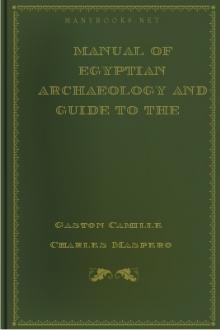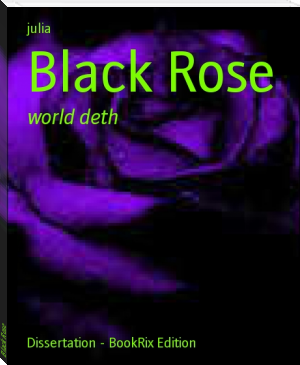Ancient America, in Notes on American Archaeology by John D. Baldwin (best thriller books to read .TXT) 📕

"It is in the form of a serpent, upward of 1000 feet in length, extended i
Read free book «Ancient America, in Notes on American Archaeology by John D. Baldwin (best thriller books to read .TXT) 📕» - read online or download for free at americanlibrarybooks.com
- Author: John D. Baldwin
- Performer: -
Read book online «Ancient America, in Notes on American Archaeology by John D. Baldwin (best thriller books to read .TXT) 📕». Author - John D. Baldwin
The metropolis of this great empire was in the island of Java, where old ruins still bear witness to the former “civilization, wealth, and splendor” celebrated by El Mas’údí. Mr. A. R. Wallace, in his work on the Malay Archipelago, says, “Few Englishmen are aware of the number and beauty of the architectural remains in Java. They have never been popularly illustrated or described, and it will therefore take most persons by surprise to learn that they far surpass those of Central America, perhaps even those of India.” The purpose of his visit to the island did not allow him to explore ruins, but he describes some of them. He saw what still remains of an ancient city called “Modjo-pahit,” and says, “There were two lofty brick masses, apparently the sides of a gateway. The extreme perfection and beauty of the brick-work astonished me. The bricks are exceedingly fine and hard, with sharp angles and true surfaces. They were laid with great exactness, without visible mortar or cement, yet somehow fastened together so that the joints are hardly perceptible, and sometimes the two surfaces coalesce in a most incomprehensible manner. Such admirable brick-work I have never seen before or since. There was no sculpture here, but abundance of bold projections and finely-worked mouldings. Traces of buildings exist for many miles in every direction, and almost every road and pathway shows a foundation of brick-work beneath it, the paved roads of the old city.” In other places he saw sculptures and beautifully carved figures in high relief.
The Malays still read and write, have some literature, and retain many of the arts and usages of civilization, but they are now very far below the condition indicated by these ruins, and described by El Mas’údí, who traveled among them a thousand years ago. It is by no means improbable that their ships visited the western coast of America, and traded with the ancient Mexicans and Peruvians in the days of their greatest power and activity. It is not easy to believe they could fail to do so after taking such control of Easter Island as to leave their language there; and, according to the old traditions of both Mexico and Peru, the Pacific coast in both countries was anciently visited by a foreign people who came in ships. But they did not come to America as civilizers; there is nothing Malayan in either the antiquities or the ancient speech of these countries.
What is known of the former great condition and power of the Malays furnishes important suggestions relative to the ancient history of the islands of Eastern Asia and the Pacific Ocean,170-* as well as those of the Indian Ocean.
The people who inhabit the eastern side of Formosa, it is said, use a Malay dialect, and have no resemblance whatever to the Mongols. Who can fully explain the little known Ainos, who formerly occupied the whole, or nearly the whole of Japan? The unmistakable traces of Malay influence every where in the islands of the Pacific can have but one meaning. The Malays formerly sailed on that ocean, occupied its islands, and doubtless visited America.
That there was communication between Eastern Asia and America in very ancient times, through the Malays or otherwise, is in a high degree probable. This continent was known to the Japanese and Chinese long before the time of Columbus. Accounts of it were recorded in their books previous to his time. They called it “Fusang,” and evidently, at some period, had been accustomed to make voyages to some part of the American coast. But neither the Malays, the Chinese, nor the Japanese came here as civilizers, for there is no trace of either of these peoples in the old ruins, in the ancient language of the country, or in any thing we know of the people whom these American ruins represent.
THE PHŒNICIAN THEORY.Some of the more intelligent investigators have maintained, with no little confidence, that this ancient American civilization came originally from the Phœnicians. Among those who use reason in their inquiries sufficiently to be incapable of accepting the absurdities of monkish fancy, this hypothesis has found more favor than any other. Wherever inquiry begins by assuming that the original civilizers came from some other part of the world, it seems more reasonable than any other, for more can be said to give it the appearance of probability.
The people known to us as Phœnicians were pre-eminent as the colonizing navigators of antiquity. They were an enlightened and enterprising maritime people, whose commerce traversed every known sea, and extended its operations beyond the “Pillars of Hercules” into the “great exterior ocean.” The early Greeks called them Ethiopians (not meaning either black men or Africans), and said they went every where, establishing their colonies and their commerce in all the coast regions, “from the extreme east to the extreme west.” But the great ages of this people are in the distant past, far beyond the beginning of what we call history. History has knowledge only of a few of their later communities, the Sabeans of Southern Arabia, the Phœnicians (meaning chiefly the Tyrians), and the Carthaginians. What a change there would be in the prevalent conceptions of the past if we could have a complete record of this race from the beginning of its development!
It is not difficult to believe that communities of the Phœnician or Ethiopian race were established all around the Mediterranean, and even beyond the Strait of Gibraltar, in ages quite as old as Egypt or Chaldea, and that they had communication with America before Tyre or Sidon was built. Why did the ancients say so much of a “great Saturnian continent” beyond the Atlantic if nobody in the pre-historic ages had ever seen that continent? It was there, as they said and as we know; but whence came their knowledge of it, and such knowledge as led them to describe it as “larger than Asia (meaning Asia Minor), Europe, and Libya together?” This ancient belief must have been due to Phœnician or Ethiopian communication with America in earlier times, which was imperfectly recollected, or perhaps never completely revealed to other nations; and this must have taken place at a very remote period, for imperfect recollection of the great continent across the Atlantic, including what Solon heard in Egypt of Atlantis, was more ancient than the constrained voyage of that Tyrian ship of which Diodorus Siculus gives an account; and it can be seen that the early Greeks had a better knowledge even of Western Europe than those of later times. A dark age, so far as relates to geographical knowledge, set in upon the countries around the Ægean Sea and on the coast of Asia Minor after the independence and enterprise of Tyre and the other Phœnician cities were destroyed by the Assyrians, toward the close of the ninth century before Christ, which was disturbed some four hundred and fifty or five hundred years later by the conquests of Alexander the Great.
The known enterprise of the Phœnician race, and this ancient knowledge of America, so variously expressed, strongly encourage the hypothesis that the people called Phœnicians came to this continent, established colonies in the region where ruined cities are found, and filled it with civilized life. It is argued that they made voyages on the “great exterior ocean,” and that such navigators must have crossed the Atlantic; and it is added that symbolic devices similar to those of the Phœnicians are found in the American ruins, and that an old tradition of the native Mexicans and Central Americans described the first civilizers as “bearded white men,” who “came from the East in ships.” Therefore, it is urged, the people described in the native books and traditions as “Colhuas” must have been Phœnicians.
But if it were true that the civilization found in Mexico and Central America came from people of the Phœnician race, it would be true also that they built in America as they never built any where else, that they established a language here radically unlike their own, and that they used a style of writing totally different from that which they carried into every other region occupied by their colonies. All the forms of alphabetical writing used at present in Europe and Southwestern Asia came directly or indirectly from that anciently invented by the race to which the Phœnicians belonged, and they have traces of a common relationship which can easily be detected. Now the writing of the inscriptions at Palenque, Copan, and elsewhere in the ruins has no more relatedness to the Phœnician than to the Chinese writing. It has not a single characteristic that can be called Phœnician any more than the language of the inscriptions or the style of architecture with which it is associated; therefore we can not reasonably suppose this American civilization was originated by people of the Phœnician race, whatever may be thought relative to the supposed ancient communication between the two continents and its probable influence on civilized communities already existing here.
THE “ATLANTIC” THEORY.I have already stated in general terms the hypothesis advanced by Brasseur de Bourbourg and some other writers. This may be called the “Atlantic” theory, for it attributes the civilization of Ancient America to the Atlantides or Atlantic race, who occupied the lost “island of Atlantis.” Brasseur de Bourbourg has studied the monuments, writings, and traditions left by this civilization more carefully and thoroughly than any other man living. He has fancies which may be safely rejected, and he has theories which, doubtless, will always lack confirmation; but he has much, also, which demands respectful consideration. There is a great deal in his books to provoke criticism; those well acquainted with the antiquities and ancient speech of Egypt may reasonably give way to a smile of incredulity while reading what he says in support of the notion that the great civilization of Egypt also came originally from this Atlantic race. Nevertheless, his volumes are important, because they furnish materials which others can use more carefully, and because he has learned to decipher some of the Central American writings and brought to view certain paths of inquiry which others may pursue with a more rigid method.
As already stated, his Atlantic theory of the old American civilization is, that it was originated on this continent, but on a portion of the continent which is now below the waters of the Atlantic Ocean. It supposes the continent extended, anciently, from New Granada, Central America, and Mexico in a long, irregular peninsula, so far across the Atlantic that the Canary, Madeira, and Azores or Western Islands may be remains of this portion of it. High mountains stood where we now find the West India islands. Beyond these, toward Africa and Europe, was a great extent of fertile and beautiful land, and here arose the first civilization of mankind, which flourished many ages, until





Comments (0)